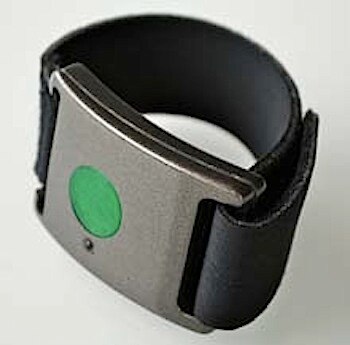Remember the 70’s and 80’s when we had mood rings that told us when we were angry, depressed, or in love? The way the mood ring worked was that the stone, or rather the hollow quartz crystal, was filled with thermotropic liquid crystals. Then depending on the wearer’s body heat, the stone changed colors. Mine really never worked as it was always displaying that I was angry.
Now Affectiva, an affective computing spin off company of MIT Media Labs, has designed a more effective way to measure emotions. Called the “Q Sensor”, the wristband is made up of a bio-sensor that measures emotional arousal through electrodermal activity, a three dimensional motion sensor that detects how and when you’re moving, and a temperature sensor. All the data is then recorded and or transmitted to a computer for analysis via the onboard USB connection of the wristband. When we have a fight or flight moment, or are stressed in general, sweat develops underneath our skin which in turn causes the skin to become more electrically conductive indicating our rise in stress levels. The same applies to the opposite, when we are less stressed our skin decreases its electrical conductance.
Now I know what you’re thinking, “big deal, anyone can see when someone’s stressed.” However that’s not necessarily true, especially in autistic children. Autistic people can’t communicate effectively to tell us when something is bothering them, or what sets off a panic meltdown. Rosalind Picard, director of the Affective Computing Research Group at MIT and cofounder of Affectiva, says, “When you see this flight-or-fight response, it doesn't tell you it's definitely stress, it just tells you something has changed. It doesn't perfectly correspond to stress as it can also go up with anticipation and excitement, but when you see it change, you know something's going on and you can look for the cause." Right now only a beta version of Q Sensor will be available for researchers and educators for around $2000, and will probably have a consumer release date somewhere in 2011 or 2012.
Eavesdropper

